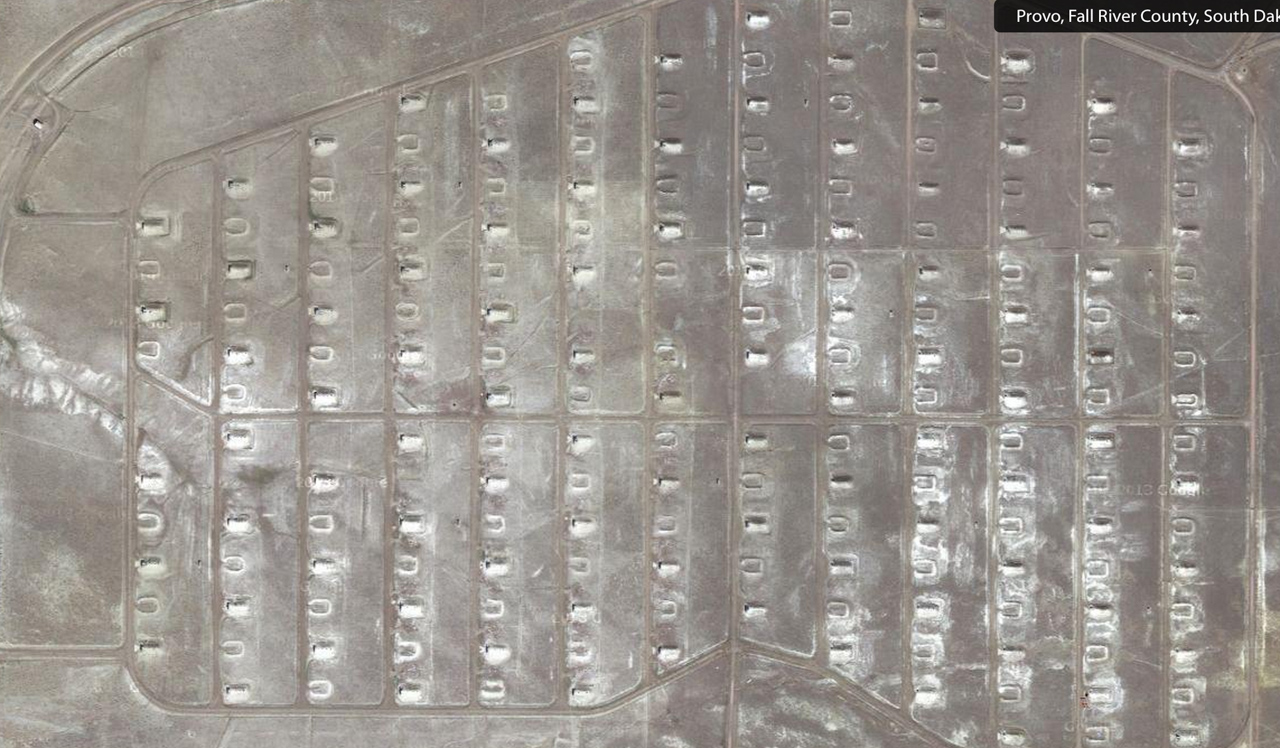By Scott Shephard
If you go to Edgemont, SD, and drive south on state road 471, you will come to a decaying road with a simple street sign marked "Fort Igloo," which shows off in the distance in this photo. As a fort, however, it had no walls and big guns to guard against attack.
Instead, it was a small city created in 1942 by the US military to serve what was known as the Black Hills Ordnance Depot. Today, the "fort" is privately owned and off limits. And it is completely abandoned as is the vast ordnance maintenance and storage facility that the city and its inhabitants served.
At its height, this area had a population of over 8000. Today, this area is largely vacant. On the warm and windless day that Deb and I visited, I don't even remember hearing bird song. The silence of the South Dakota plains is something I generally find embracing but here the lack of sound coupled with the decaying roads and buildings made this an eerie place, even in broad daylight.
The Cold War Tourist web site had access to areas that I didn't so if you find this subject interesting, visit the site for more information and some very good photos. But, to give you sense of the place, here are a few screen captures of satellite photos available on Google Maps.
First, a broad view of the entire area. The orange #2 is close to the city of Igloo. Note the rows of objects off to the left. Those are bomb bunkers. (Scale: about 10 miles from right to left.)
An overhead view of Igloo
The residential area of Igloo. The housing is gone because much of it was moved to the Pine Ridge Indian Reservation when the city was vacated in 1962.
A closer view of the "barracks"
About a mile to the south of Igloo and Provo is an area that had large buildings that appeared to be warehouses. (Click on this panoramic photo to get a better idea of the nature of the structures.)
Finally, the bomb bunkers that lay to the northwest of this facility. At one point, some say the Ordnance Depot handled mustard and sarin gas, which, as I recall, were banned by the Geneva Convention after WWI. Sarin is a nerve agent that paralyzes the lungs and can kill a human within a minute of exposure. Why not pick South Dakota to store this stuff?!
A closer view
I am fascinated by South Dakota's connection to the Cold War and would love to know more about this place in a very remote region of our state. Even more, I would love to have the chance to photograph more closely the abandoned buildings of this military outpost.

